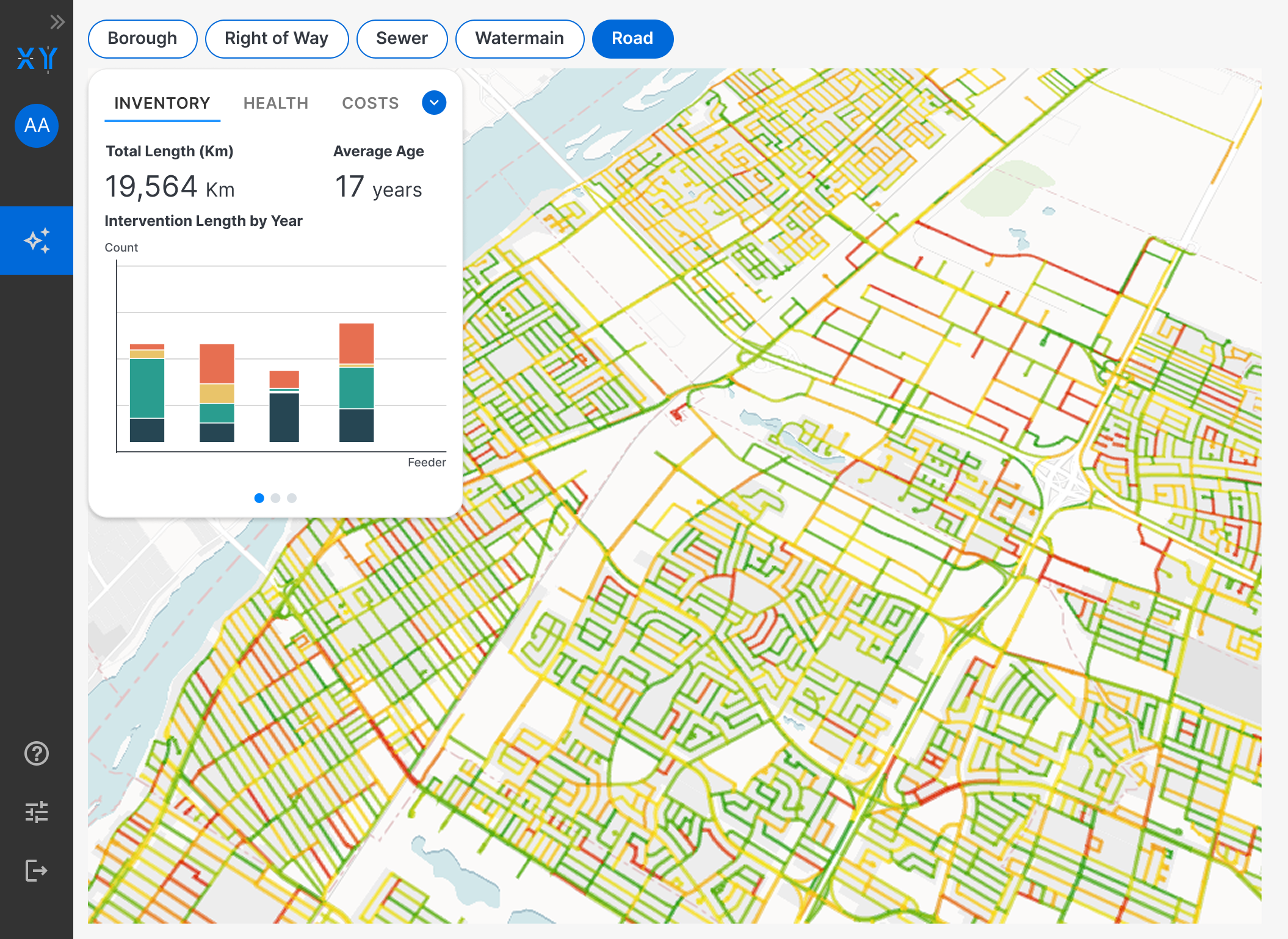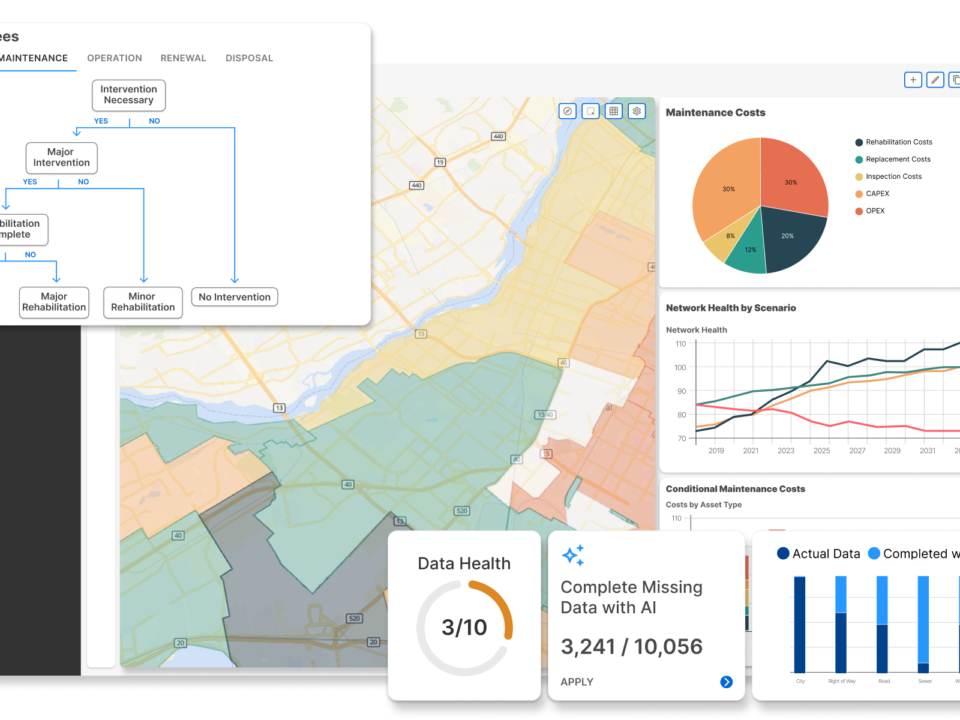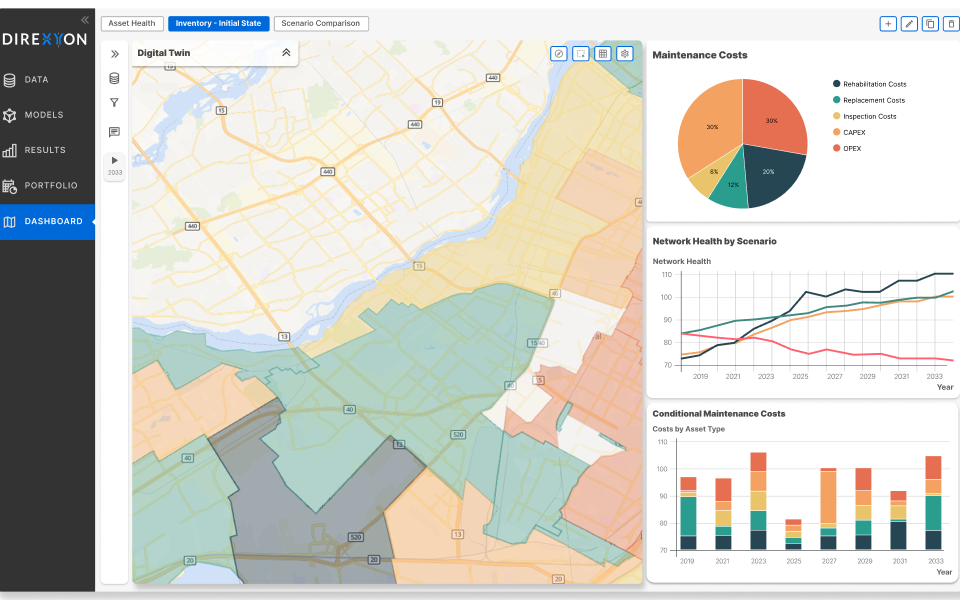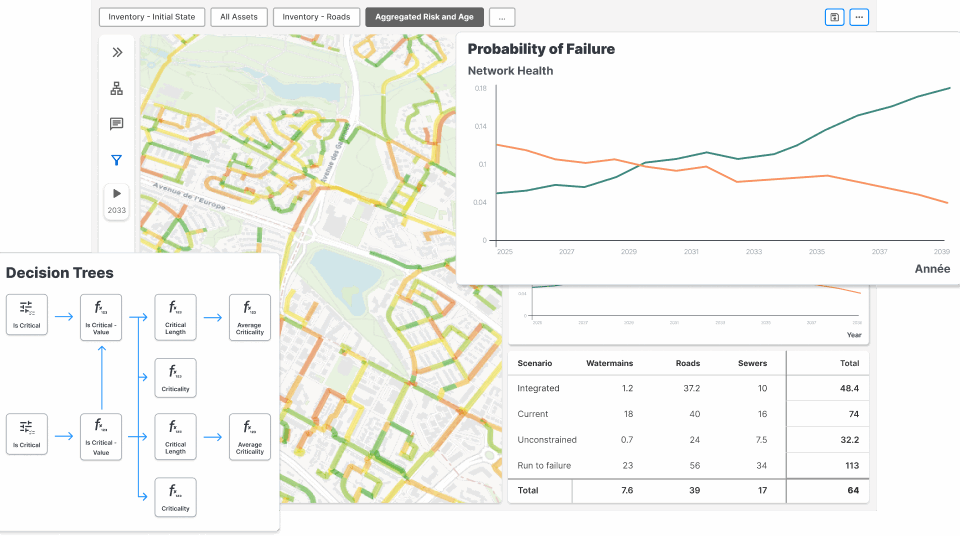
Making Every Dollar Count with Capital Planning Software
August 4, 2025What is Strategic Asset Management?
Strategic Asset Management is more than a buzzword.
It’s a transformative shift in how municipalities and electric utilities manage infrastructure, budgets, and long-term risk.
At its core, strategic asset management is about using data to make better decisions. Instead of reacting to problems as they arise, organizations leverage strategic insights to extend the life of their assets, reduce costs, and deliver better service.
If you’re responsible for roads, water mains, transformers, or transmission lines, strategic asset management can help you do more with less—and prove it.
By taking a long-term view of infrastructure assets, how they perform over time, and evaluating which investments offer the best return over its entire lifecycle not only enables greater decision-making, but safe, sustainable infrastructure that delivers superior service to citizens across your service territory.
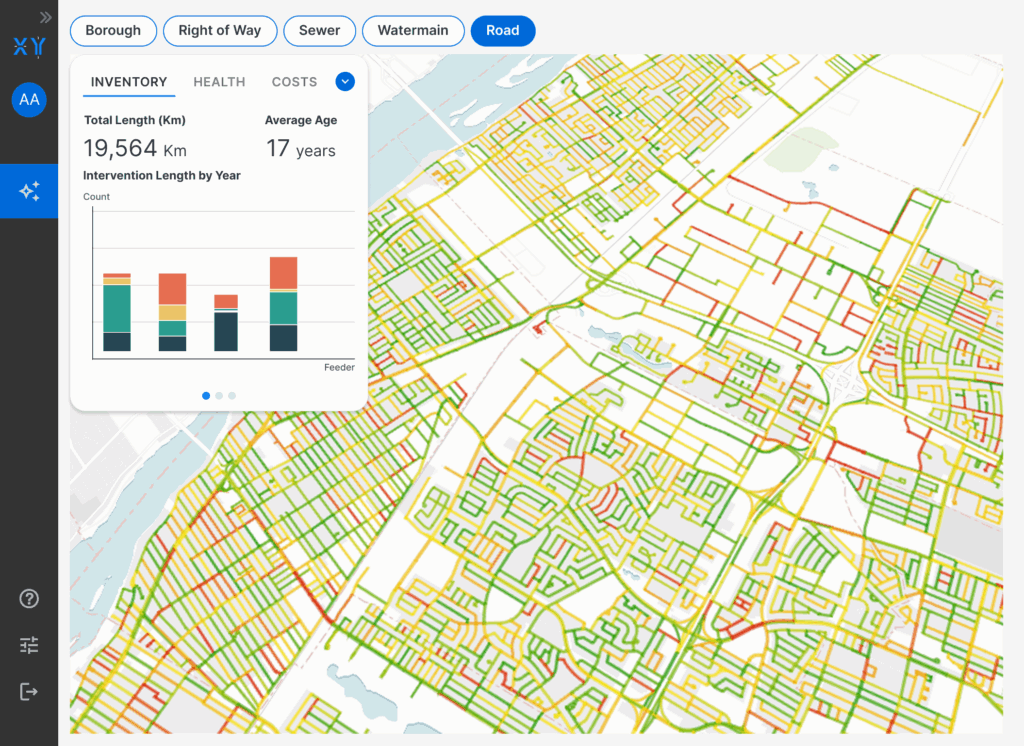
Turning data into decisions and funding
Every capital planning cycle is a balancing act. You need to justify new investments, defend existing programs, and prioritize where limited dollars will have the greatest impact.
Strategic asset management helps you build a defensible, data-backed case for investment. By centralizing asset condition data and lifecycle cost information, strategic asset management software gives you the ability to show, clearly and concisely, where money is needed, why it’s needed, and what the long-term value will be.
Whether you’re preparing a funding request, applying for grants, or addressing ratepayer concerns, the ability to present concrete evidence can be the difference between a deferred upgrade and a fully funded project.
Example: A utility using strategic asset management can demonstrate the rising maintenance costs of aging transformers and model the financial break-even point for replacement, helping secure the necessary capital before outages and asset failures occur.
Boosting operational efficiency and transparency
Strategic asset management brings visibility across departments, making it easier to coordinate maintenance, capital work, and inspections. Instead of working from spreadsheets or siloed systems, operations teams can access real-time asset data—location, condition, service history—all in one place.
For municipalities, this means fewer redundant work orders and better scheduling across crews. For electric utilities, it means improved grid resilience and fewer surprises when it comes to vegetation management or substation repairs.
And it’s not just about internal coordination. When you have a centralized view of your infrastructure, you can report more effectively to residents, councils, boards, and regulators. Transparency builds trust—and strategic asset management helps you earn it.
Example: A city public works team uses SAM to track pavement condition across neighborhoods and publish an annual street renewal plan that residents can see and understand.
Planning for the future, not just the fiscal year
Traditional asset management is often reactive: fix what’s broken, push off what isn’t.
Strategic asset management flips that approach. By modeling different scenarios and assessing total lifecycle costs, strategic asset management enables long-term planning that aligns with your organization’s strategic objectives.
Want to know the cost of extending the life of your assets versus replacing them? Curious how inflation or climate events will affect your infrastructure investments? Strategic asset management helps answer those questions.
Strategic asset management also supports long-term sustainability goals. You can identify aging infrastructure with high emissions or environmental risk and prioritize upgrades that reduce your carbon footprint while improving service delivery.
Example: A regional utility uses strategic asset management to compare the long-term impact of replacing overhead lines with underground cables in high-wildfire risk zones—factoring in risk, resilience, and lifecycle costs.
Strategic asset management is journey, not a switch
You don’t need to achieve “perfect” data before getting started. Many organizations begin with partial inventories or limited datasets. What matters most is using what you have to inform smarter decisions—and growing from there.
At DIREXYON, we work with municipalities and electric utilities to make that journey smoother.
Our asset-centric simulation platform helps you assess different investment strategies, understand the impact of trade-offs, and align decisions with your long-term goals.
Because when you can see the big picture, you can plan for it.

